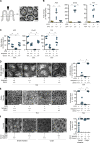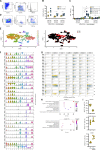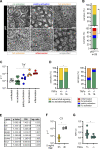Intercrypt sentinel macrophages tune antibacterial NF-κB responses in gut epithelial cells via TNF
- PMID: 34529751
- PMCID: PMC8480669
- DOI: 10.1084/jem.20210862
Intercrypt sentinel macrophages tune antibacterial NF-κB responses in gut epithelial cells via TNF
Abstract
Intestinal epithelial cell (IEC) NF-κB signaling regulates the balance between mucosal homeostasis and inflammation. It is not fully understood which signals tune this balance and how bacterial exposure elicits the process. Pure LPS induces epithelial NF-κB activation in vivo. However, we found that in mice, IECs do not respond directly to LPS. Instead, tissue-resident lamina propria intercrypt macrophages sense LPS via TLR4 and rapidly secrete TNF to elicit epithelial NF-κB signaling in their immediate neighborhood. This response pattern is relevant also during oral enteropathogen infection. The macrophage-TNF-IEC axis avoids responses to luminal microbiota LPS but enables crypt- or tissue-scale epithelial NF-κB responses in proportion to the microbial threat. Thereby, intercrypt macrophages fulfill important sentinel functions as first responders to Gram-negative microbes breaching the epithelial barrier. The tunability of this crypt response allows the induction of defense mechanisms at an appropriate scale according to the localization and intensity of microbial triggers.
© 2021 Hausmann et al.
Conflict of interest statement
Disclosures: The authors declare no competing interests exist.
Figures











References
-
- Abeler-Dörner, L., Laing A.G., Lorenc A., Ushakov D.S., Clare S., Speak A.O., Duque-Correa M.A., White J.K., Ramirez-Solis R., Saran N., et al. . 2020. High-throughput phenotyping reveals expansive genetic and structural underpinnings of immune variation. Nat. Immunol. 21:86–100. 10.1038/s41590-019-0549-0 - DOI - PMC - PubMed
Publication types
MeSH terms
Substances
Grants and funding
LinkOut - more resources
Full Text Sources
Other Literature Sources
Medical
Molecular Biology Databases

